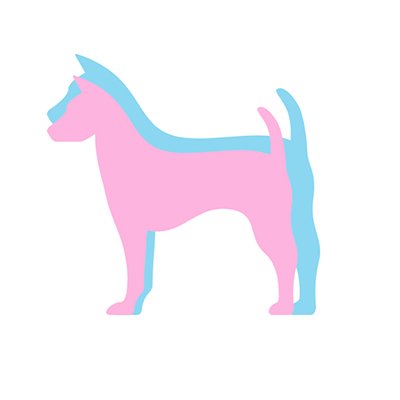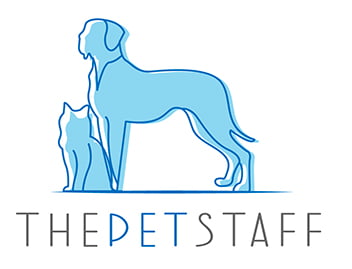If you ever come across a black version of a golden retriever, you may wonder, is that a black golden retriever? Does a black golden retriever exist? Black Golden Retrievers exist, a dark, glossy version of the well-beloved golden retriever dogs.
Because of their coat texture, a black golden retriever is called a flat-coated retriever. These lovable dogs are easy to raise and are incredibly affectionate lifelong companions. They make excellent family dogs and calm and even-tempered service or therapy dogs. Black golden retrievers are rarer than the standard golden ones but share the same basic lovable personality. Could this stunningly gorgeous yet playfully goofy dog breed be the perfect choice for you? Let’s find out.
Breed Characteristics
Temperament | Friendly, intelligent, eager to please |
Intelligence | High |
Affection/Friendliness | Very affectionate, friendly towards people and other animals |
Trainability | Highly trainable |
Mental Stimulation | Requires mental stimulation and engagement |
Exercise Needs | High |
Apartment Living | Not ideal, prefers larger spaces |
Family Friendly | Very family friendly |
Pet Friendly | Generally friendly with other pets |
Drooling Level | Moderate |
Energy Level | High |
Loneliness Tolerance | Moderate |
Adaptability | Adapts well to various environments |
Tendency to bark | Moderate |
Origin of Black Golden Retrievers
The origins of the Black Golden Retriever are the same as that of the standard Golden Retriever. Golden Retrievers were developed in Scotland in the mid-1800s for the purpose of having hunting dogs that would retrieve downed game birds. The breed became a blend of Irish Setter, Bloodhound, and a now-extinct breed of dog, the Tweed Water Spaniel. At some point in the development, flat-coated retrievers were also introduced, thus adding a recessive black coat color gene to the breed’s DNA. In very rare cases, a purebred Golden Retriever can turn out black and become a Black Golden Retriever.
However, the more common ancestry of a black golden retriever is that it is a Golden Retriever mutt with “polluted” genes, having been mixed with some other breed in its history, often a Labrador. These are not purebred Golden Retrievers, though they closely resemble them.
Regardless of whether or not a black golden retriever is a purebred black golden retriever or a golden retriever mix, they cannot be recognized by any major kennel club like the American Kennel Club or the Kennel Club because they are not a breed of their own and they do not conform to the color requirements for a standard Golden Retriever.
Regardless of the exact ancestry or breed purity, most black goldens will have the temperament and physical attributes of a Golden Retriever.

Breed Overview
Height: 23-24"
Weight: 65-75 lbs
Height: 21.5-22.5"
Weight: 60-70 lbs
Breed Group
Sporting
Life Span
10-12 years
Coat
Dense, water-repellent
Coat Length
Medium
Hypoallergenic
No
Shedding Level
Moderate to Heavy
Size
A black golden retriever is not a purebred dog, so their height and weight can vary. In general, black golden retrievers grow to 21.5-24 inches tall and weigh between 60 and 75 pounds, making them a large dog breed.
Personality
Black Goldens have the same personality as standard Goldens. They are affectionate, easy-going, gentle, playful, loyal, and goofballs that love to be around people. They are one of the easiest breeds to own due to their affable nature and fun-loving, people-pleasing personality.
Appearance/Colors
Black golden retrievers are big dogs with a strong yet graceful build. They have a medium-length black, double coat that can be wavy or straight depending on the purity of the dog’s genes. They have feathery tails and fold-over ears.
Temperament
Black golden retrievers have extremely mellow temperaments, making them some of the best family dogs you can get. Their affectionate and relaxed nature makes them perfect service or therapy dogs, and they can make great companions to seniors or small children. They are gentle and patient dogs making them ideal for families with even small children. They get along very well with other pets and dogs, and their stable and friendly personality makes them social even with strangers.
Diet/Nutritional Needs
The black golden's nutrition needs are average to the dog’s size and breed type, and they will need quality food appropriate for their age, size, and activity levels. Goldens can be prone to bloat and weight gain, so feeding your black golden retriever two measured meals a day is recommended. Freshwater should always be available, and you should keep treats and table scraps to a minimum.
Activity/Exercise Needs
Black golden retrievers are a sporting dog breed and, as such, have average to high exercise needs. These strong, agile dogs will benefit from living with owners who have an active lifestyle and can bring their dogs along.
Goldens love walks, runs, hiking, swimming, and fetching. Black golden retrievers also excel in dog sports like tracking, agility, and obedience. They also require mental stimulation to keep from being bored, and puzzle toys and trick learning are a great way to keep them mentally busy.
This breed will become destructive if they are not exercised adequately and may chew furniture, bark excessively, or become stressed, so if you do not have the time to exercise your dog daily, this might not be the breed for you.
Grooming Needs
Black golden retrievers have moderate to high grooming needs. They have a double coat prone to heavy and seasonal shedding, so you will need to prepare to brush your dog daily to keep loose hairs under control. They need to be bathed once a month. You should check their ears regularly for irritation and keep their nails trimmed short. This breed is not prone to excessive drooling, but you should aim to brush the dogs teeth regularly.
Adaptability
Like all golden retrievers, the black golden retriever is a highly adaptable and easy-going dog. So long as these dogs have their people, they seem to be able to adjust to just about anything. They are not prone to excessive barking, so they can be good apartment dogs if you have the time to exercise them daily, but they do best in homes with a big, fenced-in backyard.
With proper training, the black golden retriever can get along well with other dogs and other pets, even cats and small animals. They love being around people, and the more, the better. They are very sociable and, as such, do not make good guard dogs, but it also means they are very friendly and polite in social and public settings.
Trainability
A black golden retriever puppy is very easy to train. They love to please and are very smart, so training should be easy. They are very focused dogs and learn quickly, so puppies can be taught how to behave and obey from a young age. You should strive to use positive training methods and stay consistent with commands and rules. Socialize your puppy early on to ensure they can be calm and unstressed in new situations.
Life Expectancy
The life expectancy for a black golden retriever is 10-12 years.
Potential Health Issues
While black golden retrievers are considered generally healthy, there are a few diseases and conditions they can be prone to, given that they are a mix of standard golden.
Hip and Elbow Dysplasia
This genetic condition results in the malformation of the hip or elbow joints as early as puppyhood. This condition is primality heredity and can be painful.
Cancer
Some of the breeding-in of positive attributes has led to an increased propensity for certain types of cancer in golden retrievers, including lymphoma, hemangiosarcoma, osteosarcoma, and mass cell tumors.
Eye Issues
The three most common eye issues golden retrievers are prone to are cataracts, progressive retinal atrophy, and GRPU or Golden Retriever Pigmentary Uveitis.
Hypothyroidism
This condition leads to the decrease of thyroid hormones which leads to symptoms like lethargy, hair loss, dull coat, difficulty healing wounds, weight gain, and a weak pulse.
Bloat
Bloat is the buildup of gas in your dog’s stomach due to eating too much or too fast. Bloat can cause a dog’s stomach to distend and twist out of shape. This can be a severe condition as it prevents food from getting in or out of the stomach.
